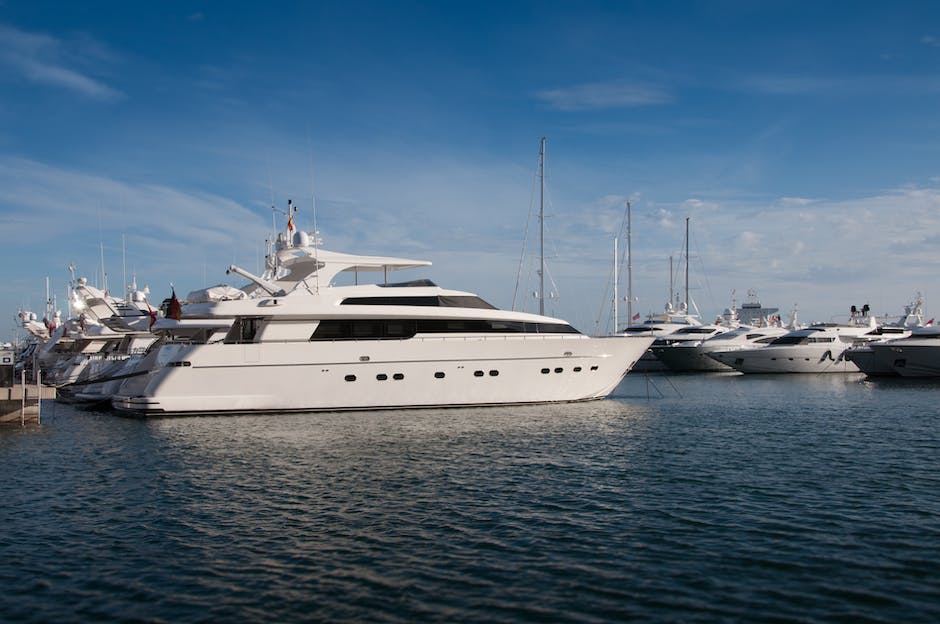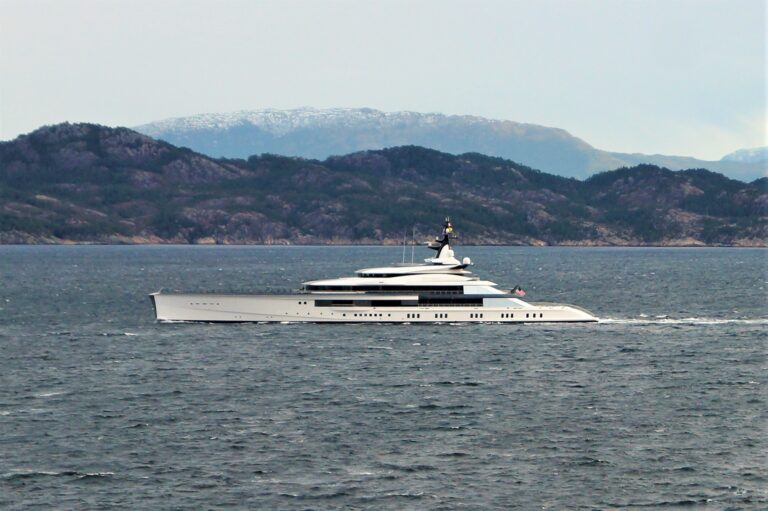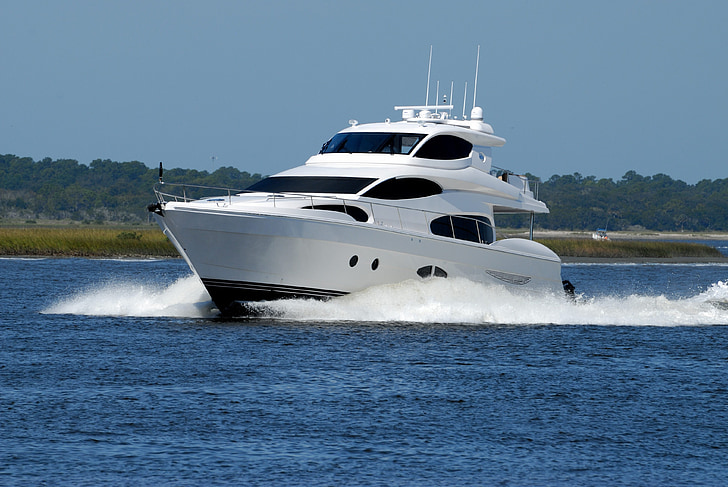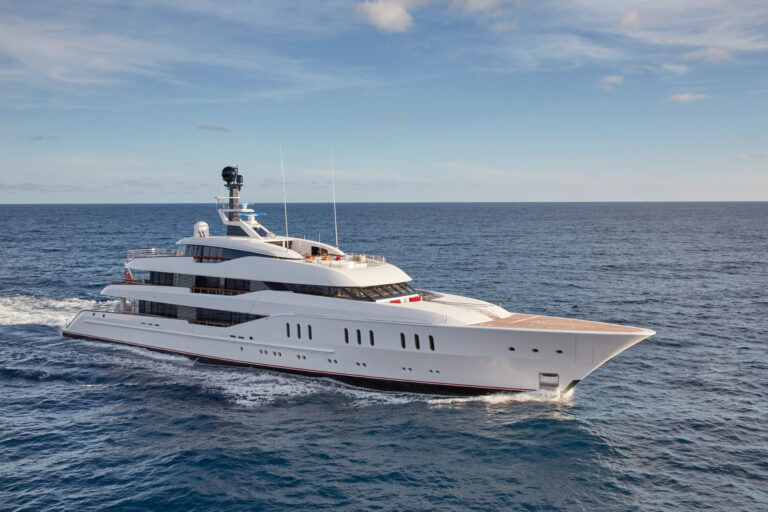Why Are Yachts Female
If you’ve ever strolled through a marina or perused a boating magazine, you might have noticed something peculiar – yachts are almost always referred to as female. From their elegant curves to their sleek hulls, these mighty vessels seem to bear the gender of the fairer sex. But have you ever wondered why this maritime tradition persists? The reasons behind this age-old practice may surprise you. In this article, we will delve into the fascinating history and cultural influences that have led us to perceive yachts as feminine entities. Prepare to set sail on a journey of discovery and unravel the enigma behind why, in the realm of boats, she reigns supreme.
Table of Contents
- Why Yachts are Often Referred to as Female: Examining the Tradition and Symbolism
- The Historical Origins of Yachts Being Called Female: Unveiling the Maritime Customs
- The Feminine Associations of Yachts: Exploring Nautical Language and Cultural Perceptions
- The Elegance and Grace of Yachts: Embracing the Poetic Connotations
- Yachts as Masterpieces: Delving into the Artistic Representation of Femininity
- Embracing Diversity: Moving Towards Gender-Inclusive Terminology in the Yachting Industry
- FAQs
- Future Outlook

Why Yachts are Often Referred to as Female: Examining the Tradition and Symbolism
Have you ever wondered why yachts are frequently referred to as female? This peculiar tradition dates back centuries and holds significant symbolism in the maritime world. Let’s delve into the reasons behind this curious naming convention.
1. Historical Context:
- In ancient times, sailors saw their vessels as lifelines during treacherous voyages. They relied on boats to protect and guide them through unpredictable waters. Hence, they personified their boats, referring to them in feminine terms to establish a nurturing and caring association. This practice also mirrors the long-standing practice of assigning female names to ships and boats in many cultures.
- The figureheads on the bows of ships, often depicting women, further solidified the idea of ships as female entities, symbolizing luck and protection during perilous journeys.
2. Symbolism and Attributes:
- Yachts’ beautiful and graceful lines are reminiscent of the female form, emphasizing elegance and sophistication. They are often compared to women’s sleek curves, enhancing their feminine identity.
- Like women, yachts can be both powerful and alluring, creating an aura of strength and mystique. This association implies that yachts possess an unspoken potency hidden beneath their refined exteriors.
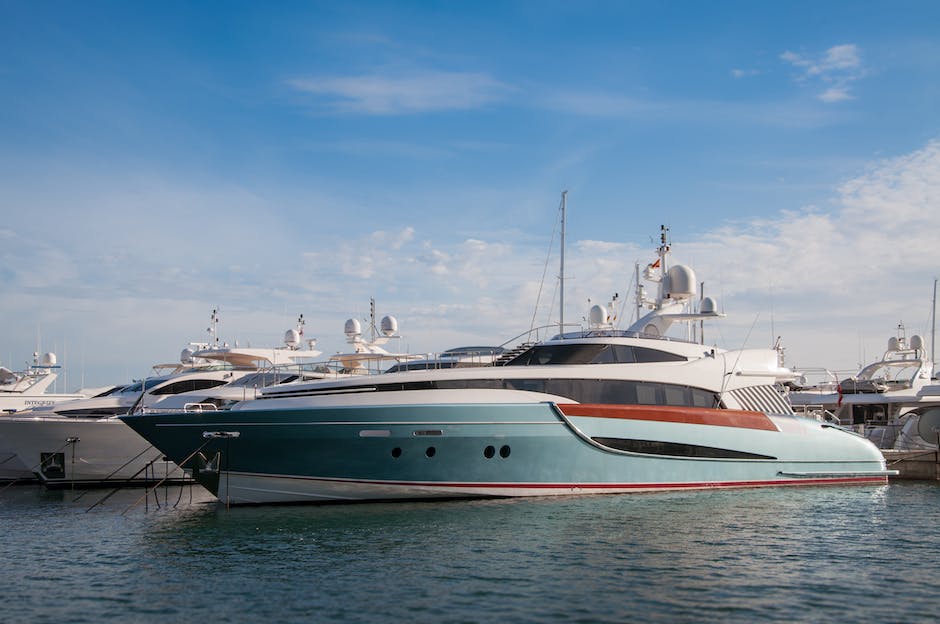
The Historical Origins of Yachts Being Called Female: Unveiling the Maritime Customs
In the realm of maritime customs, an intriguing phenomenon has persisted throughout history – the tradition of referring to yachts as female. Exploring the historical origins of this nautical convention unveils a captivating tapestry of seafaring traditions and cultural influences. A closer inspection reveals the intricacies and reasoning behind this peculiar practice.
1. Cultural symbolism: Just as cultures across the globe have assigned gender roles and characteristics to various objects, yachts too were assigned feminine qualities. This symbolism often stemmed from the belief that vessels, like women, possess grace, beauty, and elegance. Thus, referring to yachts as “she” or by female names became a way of celebrating their aesthetic qualities and fostering a sense of admiration.
2. Navigational origins: Another reason for this maritime custom lies in the historical association between navigation and celestial bodies. Before the advent of advanced navigation technology, sailors relied on the stars to navigate the vast seas. These celestial bodies, such as the moon and stars, were often personified as female in ancient cultures. As yachts navigated the waters, they became intertwined with the celestial symbolism and borrowed the association with femininity.
3. Superstitions and luck: Yachting, much like any seafaring endeavor, has historically been associated with a myriad of superstitions and rituals. One such belief was that having a female representation on board, in the form of a female figurehead or naming the vessel after a woman, would bring good fortune. This belief stretches back to the era of ancient goddesses and their protective powers, fostering an enduring tradition of naming yachts after women.
4. Historical shipbuilding: Delving into the annals of shipbuilding reveals yet another facet of the reason behind yachts being called female. Traditional shipbuilding techniques often involved bending wooden planks and framing ribs, a delicate process that required meticulous care and craftsmanship. This craftsmanship was often carried out by men who were adept at shaping the wood and employing their skills to create a vessel that mirrored the curves and form associated with femininity.
5. Linguistic evolution: As language continually evolves, it often retains historical quirks and conventions. The tradition of referring to yachts as female has been ingrained in nautical jargon for centuries, embodying a linguistic trait that has endured the test of time.
Intriguingly, this maritime custom of addressing yachts as female serves as a testament to the interconnectedness of cultural traditions and historical narratives. Through understanding its origins, we gain insight into the intricate web woven by seafaring traditions, symbolic associations, and linguistic evolution. As we embark on future voyages aboard these majestic vessels, we are reminded of the rich tapestry of maritime customs that have shaped and influenced the world of yachting.

The Feminine Associations of Yachts: Exploring Nautical Language and Cultural Perceptions
When picturing a yacht, one may conjure up glamorous images of opulent vessels cruising along crystal-clear waters, often associated with wealth and indulgence. However, delving deeper into the topic, it becomes evident that yachts are not just floating symbols of affluence. They are imbued with an array of feminine associations that reflect both nautical language and cultural perceptions. These associations can be observed in the various aspects of yachts, their terminology, and societal interpretations.
Nautical language plays a significant role in shaping the feminine associations of yachts. For instance, many yacht parts and features bear female names, such as “bow” or “stern,” which are commonly used to refer to the front and back of the vessel, respectively. This linguistic choice can subconsciously contribute to the perception of yachts as feminine objects. Moreover, the very notion of “setting sail” or “being adrift at sea” carries a poetic essence often associated with femininity – a deep connection to nature’s vast and unpredictable elements. These linguistic nuances add depth to the feminine associations surrounding yachts.

The Elegance and Grace of Yachts: Embracing the Poetic Connotations
Yachts, with their unparalleled elegance and grace, effortlessly embody a sense of beauty and refinement that captivates all who lay eyes upon them. These magnificent vessels epitomize the pinnacle of sophistication, seamlessly blending artistry and functionality. The evocative connotations they conjure, akin to poetry in motion, are nothing short of mesmerizing.
When stepping aboard a yacht, one is immediately enveloped in a world of splendor and luxury. The meticulous craftsmanship evident in every detail, from the polished woodwork to the sumptuous furnishings, creates an ambience that exudes opulence. The sleek lines and graceful curves of a yacht’s design, reminiscent of a masterfully composed poem, evoke a sense of harmonious unity. As the yacht glides through the shimmering waters, one can’t help but be entranced by the seamless dance between nature and man-made creation.

Yachts as Masterpieces: Delving into the Artistic Representation of Femininity
Yachts, the ultimate symbols of luxury and elegance, have long been admired for their impeccable craftsmanship and stunning designs. However, beyond their opulent exterior lies a deeper artistic representation – one that delves into the concept of femininity. These floating masterpieces effortlessly capture the essence of womanhood through their graceful curves, intricate detailing, and captivating charm.
Step on board any of these magnificent vessels, and you’ll be transported into a world where femininity reigns supreme. The streamlined contours of the yacht’s hull mirror the sensuous curves of a woman’s body, evoking a sense of beauty and allure. Each meticulously designed feature, from the sleek cabin layout to the ornate furnishings, pays homage to the elegance and refinement often associated with the feminine aesthetic. The soft color palettes that adorn the interior spaces – ranging from blush pinks to soothing blues – create an atmosphere of tranquility, exuding a gentle and nurturing energy that is uniquely feminine.
Furthermore, the attention to detail displayed in these artistic marvels is truly remarkable. Delicate patterns, etchings, and motifs adorning the surfaces of the yacht serve as an ode to the rich history and cultural significance of femininity. Intricately carved sculptures of women can be found adorning the stern, further accentuating the connection between the yacht and the representation of womanhood. It is this subtle amalgamation of art and femininity that elevates these yachts to unimaginable levels, captivating the admiration of all who witness their grace and beauty. So, step into the world of yachts as masterpieces and discover a truly unique and artistic representation of femininity that transcends time and trends.
Embracing Diversity: Moving Towards Gender-Inclusive Terminology in the Yachting Industry
In the ever-evolving yachting industry, it is crucial to address the need for gender-inclusive terminology. By embracing diversity and acknowledging the importance of inclusivity, the industry can create a more welcoming and respectful environment for all individuals involved. This shift towards gender-inclusive language not only reflects the progressive nature of the industry but also promotes equality and encourages a sense of belonging among crew members, yacht owners, and guests.
One key aspect of embracing diversity is the use of gender-neutral terms. This ensures that everyone, regardless of their gender identity, feels represented and acknowledged within the yachting community. For instance, using terms such as “crew member” or “yacht professional” instead of gender-specific terms like “stewardess” or “captainess” fosters an inclusive and non-discriminatory atmosphere. This also opens up opportunities for individuals who may have been discouraged by gender stereotypes to pursue their passions in the yachting industry.
Furthermore, it is essential to provide education and awareness surrounding gender diversity and inclusive language in the yachting industry. By implementing training sessions or workshops, yacht owners and crew members can gain a deeper understanding of why gender-inclusive terminology is important and how it can positively impact the industry as a whole. Additionally, creating a set of guidelines or best practices that highlight inclusive language usage can serve as a reference point for individuals seeking to use respectful and appropriate language in their communication within the industry. Embracing diversity and moving towards gender-inclusive terminology is a significant step towards enriching the yachting industry, making it more inclusive, and embracing the unique experiences and perspectives that each individual brings on board.
FAQs
FAQs: Why Are Yachts Female?
1. Are all yachts referred to as “she”?
Yes, traditionally, yachts are commonly referred to with feminine pronouns, such as “she” or “her.”
2. Why do people call yachts “she”?
The practice of assigning a female gender to yachts goes back to centuries-old maritime traditions, linking vessels to the feminine qualities of beauty, elegance, and power.
3. Is it just a tradition or is there a deeper reason?
The use of “she” for yachts is primarily rooted in tradition, as it helps sailors form a connection with their vessel and treats it with respect. There is no scientific or logical reason behind it.
4. Can yachts be referred to as “he” instead?
Although traditionally yachts are referred to as female, there is no hard and fast rule. Some yacht owners may choose to use the pronoun “he” or “it,” and it ultimately depends on personal preference.
5. Is this practice limited to yachts?
No, referring to vessels with feminine pronouns is a common maritime tradition observed for various types of ships and boats, including warships, commercial vessels, and even lifeboats.
6. Are there any modern reasons to continue this tradition?
The tradition of assigning a female gender to yachts is mainly upheld for sentimental and historical purposes. Some argue that it helps maintain the charm and romanticism associated with maritime adventures.
7. Does calling a yacht “she” affect its performance?
No, using feminine pronouns for a yacht has no tangible impact on its performance, safety, or any functional aspect.
8. Is it considered offensive to call a yacht “she” in today’s times?
No, the practice of using feminine pronouns for yachts is generally not seen as offensive or disrespectful. However, sailing communities are inclusive, and it’s important to respect individual preferences if someone chooses to refer to their yacht using a different pronoun.
9. Can I call my yacht whatever I want?
Certainly! As the owner of a yacht, you have the freedom to call it whatever you please. Whether it’s a traditional “she,” a bold “he,” or any other pronoun, it’s entirely your choice and personal expression.
10. Are there any legal implications to calling a yacht “she” or “he”?
No, there are no legal implications based on the gender pronouns used for a yacht. It does not affect ownership, registration, or any legal matters related to your vessel.
Insights and Conclusions
In conclusion, the reason why yachts are often referred to as female is rooted in tradition and nautical history. While it may seem puzzling at first, this naming convention has become deeply ingrained in the maritime world. Yachts, like women, are often associated with elegance, beauty, and grace. Moreover, they are powerful vessels that require skill and nurturing to be handled with care. Despite the occasional debates around gendered language, the tradition of naming yachts after women remains an enduring aspect of seafaring culture. So the next time you come across a majestic yacht, remember that she is more than just a vessel – she is a symbol of timeless allure and female strength on the open seas.

